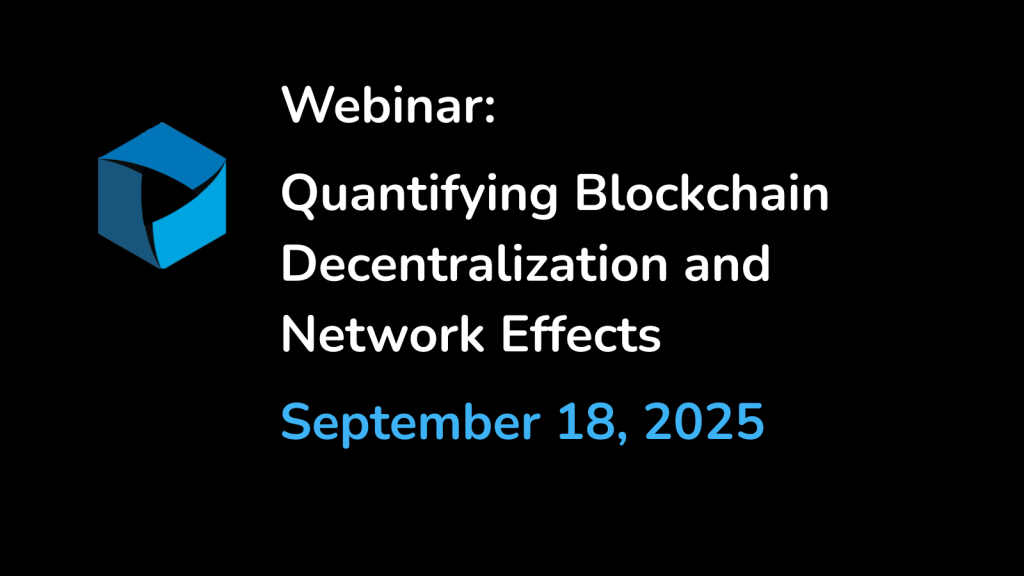Is your favorite blockchain really decentralized? How strong are its network effects?
Crypto networks are assumed to be decentralized. But are they really? Network effects are important in measuring blockchain health. Are they growing or stagnant?
Join us on Thursday September 18th at 11 am ET as we discuss ways to measure decentralization and network effects. We’ll compare popular networks, discuss some of the mathematical tools, and show how one can assess whether a blockchain’s transactions are more or less decentralized.
Registration: here
Tim Sumner is a data scientist, and leads DAR’s quantitative research. His expertise is using data to find insights with a focus on blockchain networks, markets and trading, and adjacent datasets.
Appropriate for:
– Investors
– Risk Managers
– Due Diligence Teams
– Listing Policy Teams
– Token Support Teams
– Project Teams
Selected topics:
– Scoring and comparison of various blockchain networks
– Why decentralization and network effects are useful to quantify
– Why transaction volume alone is not a sufficient indicator of decentralization and network effects
– Metrics for measuring decentralization and network effects that have been proven in assessing other types of networks
– How these metrics can be applied to crypto networks

